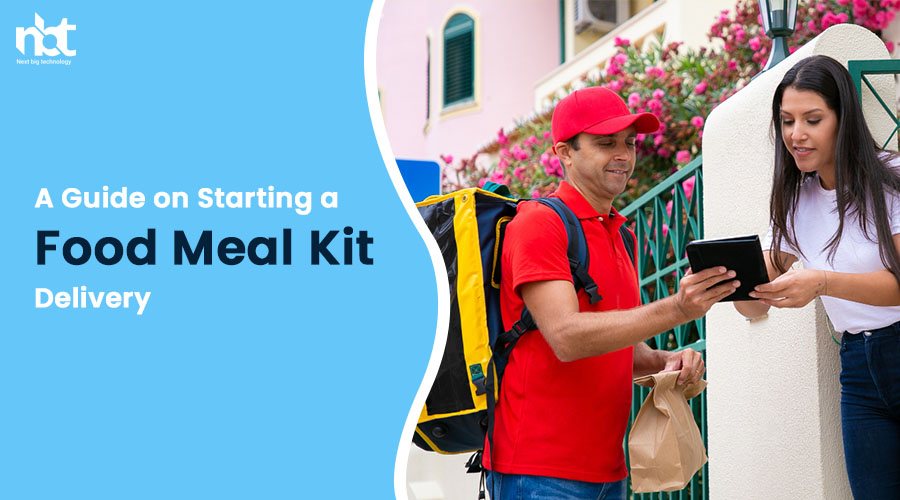Introduction: In recent years, the demand for food meal kit delivery services has grown significantly. These services offer convenience, variety, and the opportunity to enjoy home-cooked meals without the hassle of meal planning and grocery shopping. If you’re considering starting your own food meal kit delivery service, this comprehensive guide will walk you through the essential steps and considerations to turn your vision into a successful business venture.
- Market Research and Concept Development: Before diving into the logistics of starting a food meal kit delivery service, conduct thorough market research to understand the target audience, competition, and potential demand in your area. Identify a unique selling proposition and develop a concept that differentiates your service from existing players in the market. Consider factors such as the types of meals you want to offer (e.g., vegetarian, vegan, family-friendly), dietary restrictions or preferences, and any niche markets you may want to target.
- Menu Planning and Recipe Development: Design a menu that appeals to your target audience and aligns with your concept. Create a balance between variety, seasonality, and customer favorites. Consider offering a range of options to cater to different dietary needs, such as gluten-free, dairy-free, or low-carb meals. Collaborate with professional chefs or recipe developers to create delicious and easy-to-follow recipes that showcase your brand’s identity and quality.
- Sourcing Ingredients and Supplier Relationships: Establish relationships with local and reliable suppliers to ensure a steady and high-quality ingredient supply. Emphasize fresh, locally sourced, and organic ingredients whenever possible. Negotiate pricing and delivery schedules with suppliers to optimize cost and minimize wastage. Maintain transparency in your sourcing practices and consider partnering with suppliers who share your commitment to sustainability and ethical practices.
- Packaging and Delivery Logistics: Invest in high-quality and eco-friendly packaging materials that keep ingredients fresh during transit. Develop packaging guidelines and temperature control protocols to ensure food safety. Design user-friendly meal kits with clear instructions, labeled ingredients, and any necessary cooking or preparation tips. Determine your delivery radius and choose between in-house delivery or partnering with third-party delivery services. Streamline delivery operations to ensure timely and efficient service.
- Technology and Online Platform: Invest in a robust and user-friendly online platform to streamline the ordering, payment, and customer management processes. Develop a mobile app or website that allows customers to browse the menu, select their meals, customize options, and schedule deliveries. Incorporate features such as customer profiles, order history, and subscription options to enhance user experience and encourage customer loyalty. Implement secure payment gateways to facilitate smooth transactions.
- Marketing and Customer Acquisition: Craft a comprehensive marketing strategy to generate awareness and attract customers. Utilize digital marketing channels such as social media, content marketing, influencer partnerships, and targeted online advertising to reach your target audience. Consider offering promotional discounts or referral programs to incentivize customer acquisition. Engage with customers through personalized communication, newsletters, and loyalty programs to build strong relationships and encourage repeat orders.
- Operations and Customer Support: Ensure smooth operations by implementing efficient inventory management, production planning, and order fulfillment processes. Monitor customer feedback and implement mechanisms for continuous improvement. Offer responsive customer support channels such as email, live chat, or phone to address inquiries, concerns, and feedback in a timely manner. Build a reputation for exceptional customer service to differentiate your meal kit delivery service from competitors.
- Scalability and Growth: As your business grows, focus on scalability and expansion opportunities. Explore partnerships with local businesses, such as grocery stores or specialty food retailers, to increase your distribution reach. Consider introducing additional services, such as ready-to-eat meals or add-on items, to diversify your offerings. Continuously assess market trends, customer preferences, and industry developments to adapt and innovate accordingly.
Conclusion: Starting a food meal kit delivery service can be a rewarding venture in the dynamic food industry. By conducting thorough market research, developing a unique concept, planning menus, establishing supplier relationships, optimizing packaging and delivery logistics, investing in technology, implementing effective marketing strategies, prioritizing operations and customer support, and focusing on scalability, you can build a successful and sustainable business. Remember, customer satisfaction, quality ingredients, and convenience should be at the core of your service, allowing customers to enjoy delicious meals in the comfort of their homes.

















